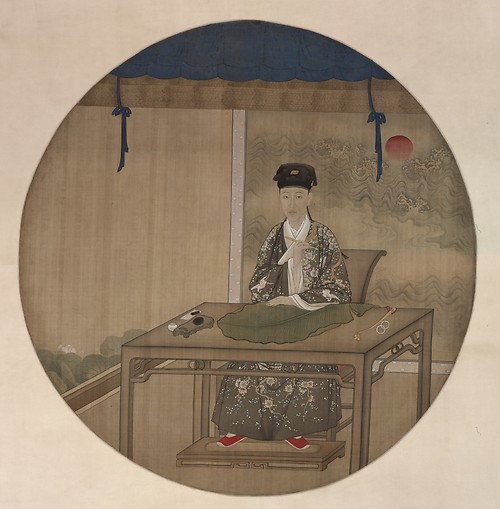Forbidden City
China’s most extravagant monarchs—the Qianlong Emperor (r. 1736–95) presided over China’s last dynasty
弘曆圓形古裝行樂圖像 軸
Portrait of the Qianlong Emperor in Ancient Costume
Lent by the Palace Museum, Beijing

The Qianlong Emperor was a master in using Western-style illusionistic images of himself in different guises to create alternate personae. Here, the youthful emperor had himself portrayed as a cultured Chinese scholar. Sitting in his study appointed with classical Chinese-style furniture, he is poised, brush in hand, to transcribe a poem onto a banana leaf. The only detail that distinguishes him from a traditional scholar is his ornate robe covered with auspicious motifs of flowers and cranes in bright, contrasting colors.

乾隆御筆“層閣延春”貼落
Qianlong Emperor (1711–1799; r. 1736–95)
Calligraphic Inscription, dated 1776
From the Belvedere of Viewing Achievements (Fuwangge)
Lent by the Palace Museum, Beijing
An avid calligrapher, the Qianlong Emperor developed a distinctive style characterized by regularity and restraint. Inscribed on gold-painted paper made specifically for the court, this text describes his anticipation of retirement.
The Emperor’s Private Paradise: Treasures from the Forbidden City
February 1, 2011–May 1, 2011
More photos from Time Magazine
Chinese paintings from as early as the eleventh century depict Buddhist and Daoist figures seated on rustic rootwood chairs as a way of suggesting their indifference to worldly goods and their synchrony with the natural forms of the cosmos.
Pu Yi February 7, 1906
Dr. An Wang February 7, 1920
Offering Table with Lords of the Cremation Grounds fromTibet